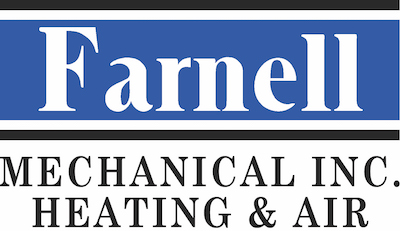
Spaces that don’t have ductwork, including an addition, sunroom or garage, can be difficult to heat and cool. Lengthening ductwork from a present system could be costly. And that additional space could just be too sizeable for your home comfort equipment to take on, as your equipment wasn’t sized with it in mind.
A mini-split is a great option for these areas because it doesn’t need ductwork. This combined heating and cooling system has two components: an outdoor condenser and an indoor wall-mounted evaporator. It’s typically referred to as a mini-split heat pump since it shifts heating and cooling, as opposed to creating it. Because of this, mini-splits are very energy-efficient, with most reaching ENERGY STAR® certification.
Picking the right model for your home may feel like a large task, but our heating and cooling pros at Farnell Mechanical, Inc. can offer assistance. We’ll begin with a no-obligation consultation to hear about your needs before offering you a free estimate. We’ll also go over any special offers, rebates and financing you might be eligible for.
Here’s about how much you can expect to be responsible for when you’re installing a ductless mini-split.
Average Cost for Mini-Split Installation
One of the most often installed sizes is a 12,000 BTU mini-split. This will heat and cool an estimated 450–550 square feet, or about the size of a studio apartment.
With professional installation, the average mini-split cost for this size is around $3,000, according to HomeAdvisor, who compiles average nationwide prices for common home improvement projects.
Your total mini-split installation cost will be different based on the type you go with and how energy efficient it is. According to HomeAdvisor, other additional costs might entail:
- Installing a concrete area for the outdoor condenser, $75–$300.
- Installing a dedicated electrical circuit, $250.
- Upgrading the electrical panel, $1,200. This may be needed if you have an older house.
Will a New Mini-Split|Do Mini-Splits|Can a High Efficiency Mini-Split} Receive a Tax Credit?
Getting an ENERGY STAR-certified ductless mini-split can give you access to valuable tax credits. The mini-split tax credit is $300 for eligible systems installed at your home through December 31, 2021. We advise chatting with your tax professional for more information.
Energy companies in Auburn and Opelika also often have rebates for installing energy-efficient heating and cooling equipment. We’ll help you figure out this process to make sure you have the best value from your new mini-split unit.
Are Mini-Splits Worth the Price?
Although purchasing a mini-split is usually pricier than typical heating and cooling systems, it’s an extremely efficient approach to heat and cool tricky spots in your home. These include:
- Additions.
- Garages.
- Sunrooms.
- Areas you don’t use very often.
- Spaces with hot and cold spots.
ENERGY STAR also suggests using mini-splits in residences with special challenges, such as:
- Pricey electric heat from baseboards, wall heaters or radiators.
- Pricey central heat, either as a result of high fuel prices or decreased efficiency.
- Older homes that don’t have ductwork as a result of radiator or baseboard heat.
When compared to more common electric heating and cooling, ENERGY STAR says a mini-split can save you up to 30% on cooling and up to 60% on heating. You’ll also get precise control over temperatures from room to room, as a result of zoned mini-split technology.
Our Professionals Can Handle All Your Mini-Split Installation Needs
From helping you choose the right model to professionally installing it, our professionals at Farnell Mechanical, Inc. can take care of all your mini-split installation needs. Give us a call at 334-524-2458 today to find out how a mini-split system can make your residence cozier and to request your free estimate!
